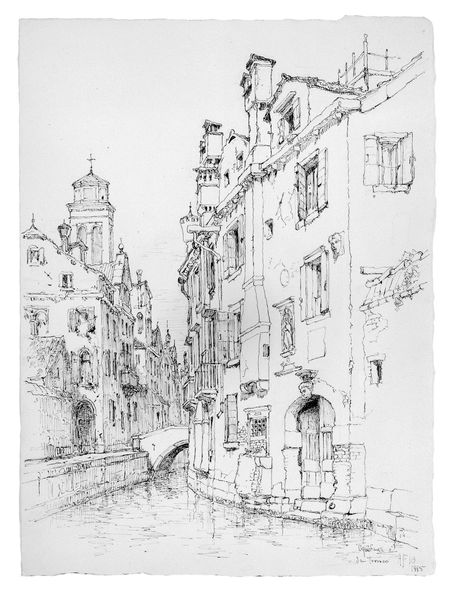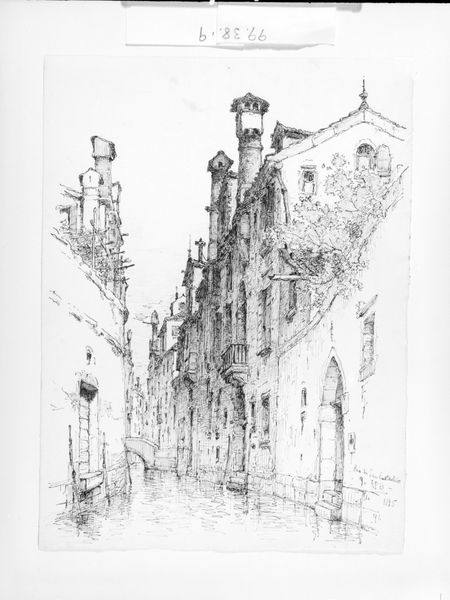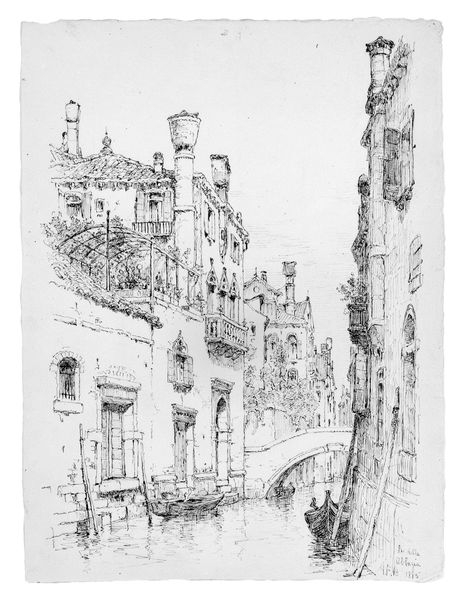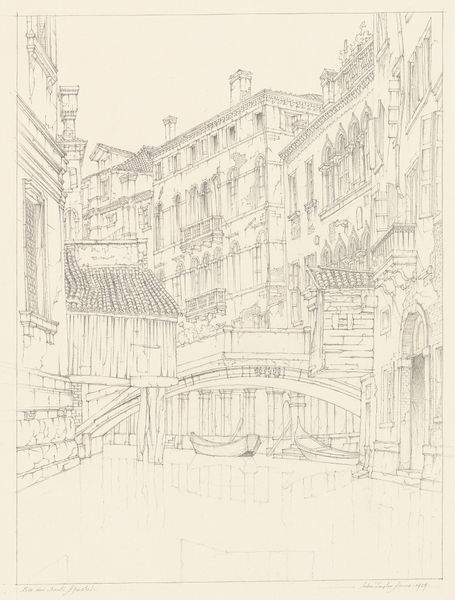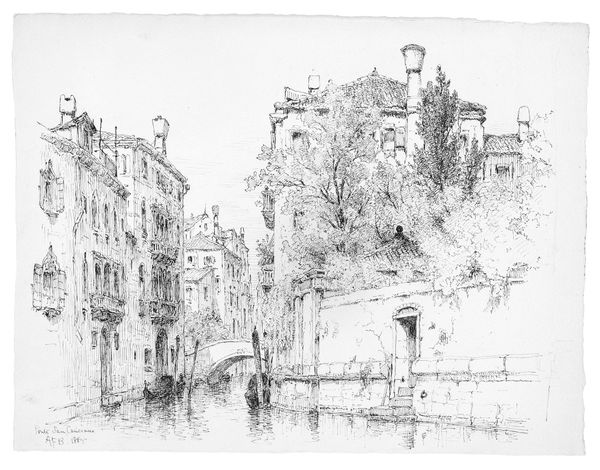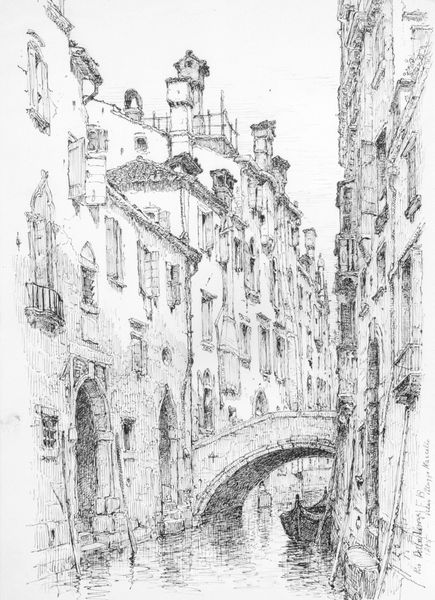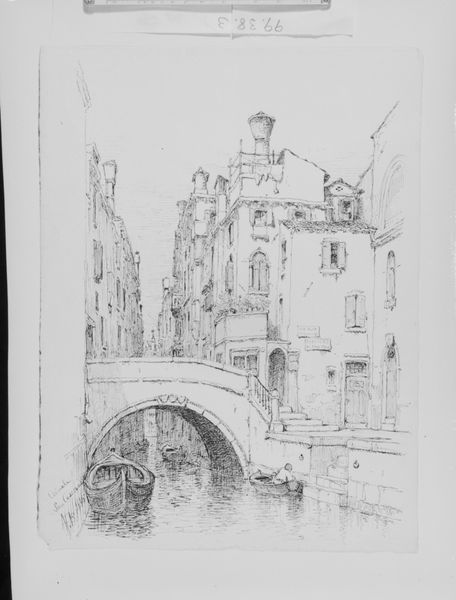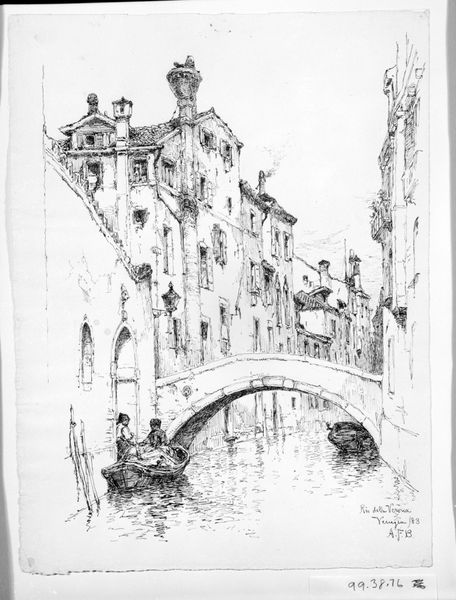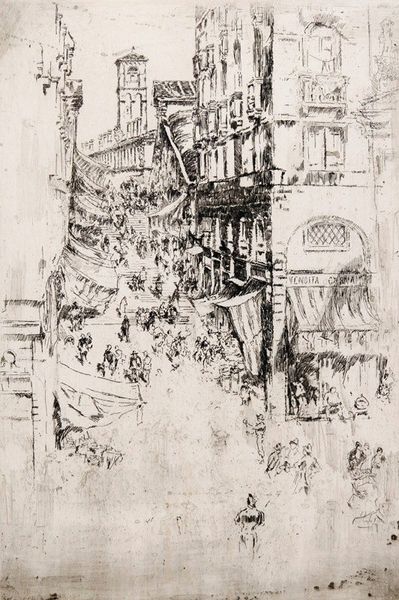
drawing, etching, ink
#
drawing
#
etching
#
landscape
#
etching
#
ink
#
cityscape
Dimensions: 12 1/4 x 9 5/16 in. (31.1 x 23.7 cm)
Copyright: Public Domain
Curator: This is Andrew Fisher Bunner's 1885 etching, "Palazzo Contarini degli Scrigni, Venice," currently residing here at The Met. The artwork primarily utilizes ink and drawing techniques. Editor: My initial impression is one of a dreamlike rendering. The intricate details feel almost fantastical, yet there's also an air of melancholic decay in the architectural structures. Curator: That's interesting. Thinking about Venice at the time, particularly in relation to artists, it served as a stage where many questioned traditional artistic values against the backdrop of its waning political and economic power. Bunner captures this sense of a grand past meeting a somewhat uncertain present. Editor: Right, and the Palazzo itself takes on a powerful role. I'm considering Venice as a historical construction—the way these decaying palaces serve as physical embodiments of lost power, constantly consumed and re-presented within varying gendered and political contexts. Curator: Absolutely. This also intersects with how artists from various national backgrounds flocked to Venice, shaping a specific kind of artistic narrative of the city. Consider how Bunner, as an American, perceived and rendered this iconic Venetian scene versus, say, a native artist of the time. It speaks to the colonial gaze present in much landscape art of the period. Editor: It also calls to question how the Palazzo represents the idea of public vs. private space. Is it a commentary on access, privilege, or the socio-economic disparities that manifested in the city’s architectural landscape? The murky canal feels almost oppressive, separating the viewer from the depicted aristocratic domain. Curator: His skillful handling of the etching technique invites us to question how these historical spaces operate within cultural memory and present-day issues surrounding class and inequality. It highlights the power dynamics at play. Editor: I agree. It provokes a nuanced conversation around historical preservation, the politics of representation, and how art engages with societal critique, all of which are crucial when revisiting and reinterpreting historical artworks like this. Curator: This piece urges us to consider the various layers through which a seemingly simple city scape like the "Palazzo Contarini degli Scrigni, Venice," encapsulates historical narratives, personal identities, and socio-political commentaries, enriching our dialogue between the past and present. Editor: Ultimately, the artwork reminds us of the complexities behind seemingly serene portrayals, beckoning us to investigate both the beauty and burden ingrained within historical cityscapes.
Comments
No comments
Be the first to comment and join the conversation on the ultimate creative platform.
